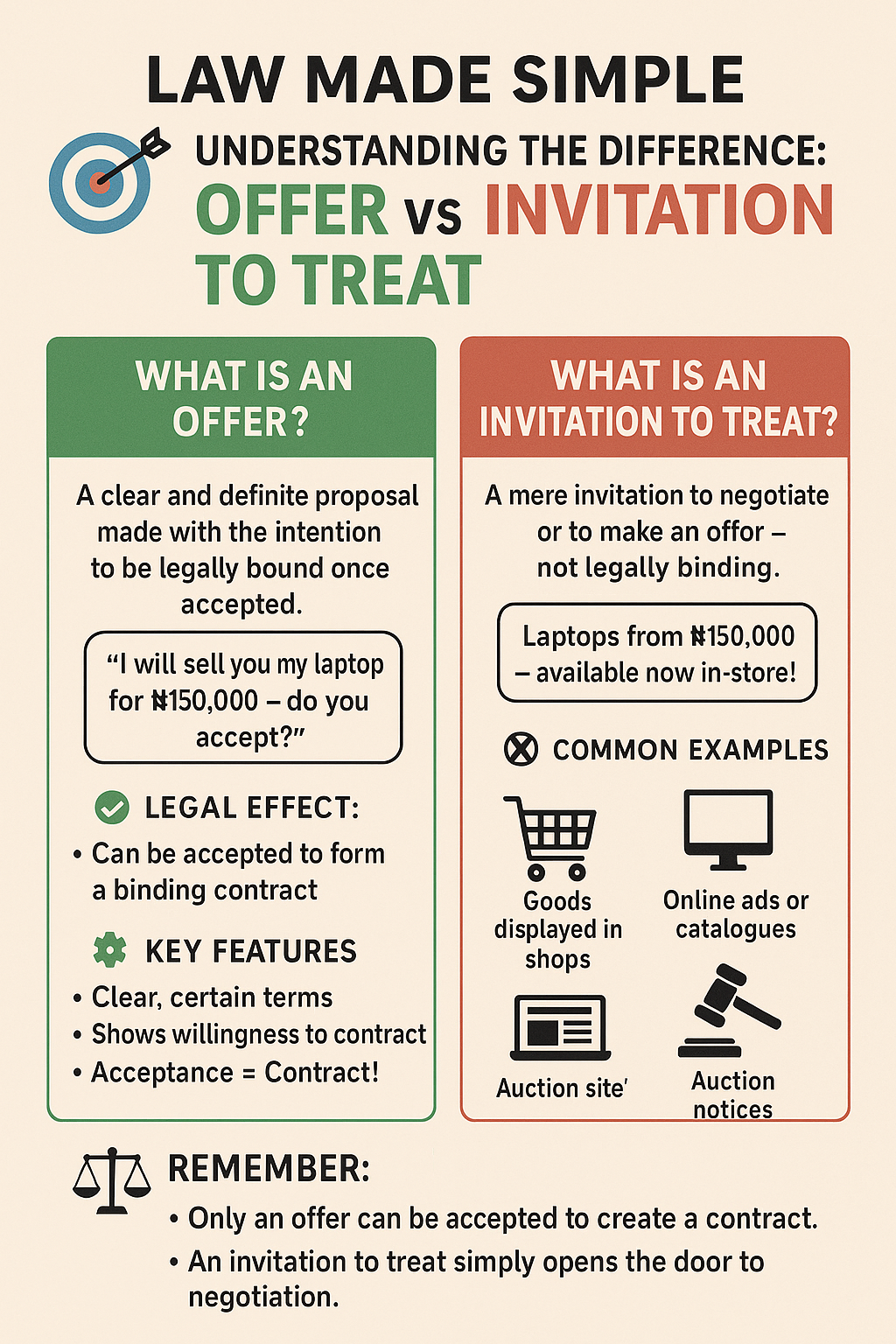An offer is a clear, definite, and unequivocal expression of willingness by one party (the offeror) to enter into a contract with another party (the offeree) on specific terms, with the intention that it will become binding as soon as it is accepted. Key characteristics of an offer include:
1. Definiteness: The terms of the offer must be clear and certain, leaving no room for ambiguity.
2. Intention to be Bound: The offeror must demonstrate a genuine intention to be legally bound if the offer is accepted.
3. Communication: The offer must be communicated to the offeree.
Once a valid offer is made, the offeree has the power to accept it, thereby creating a legally enforceable contract.
What is an Invitation to Treat?
In contrast, an invitation to treat (or invitation to offer) is merely an expression of willingness to negotiate or to receive offers. It is a preliminary step in the negotiation process and does not demonstrate an intention to be bound immediately upon a response. Examples commonly recognized as invitations to treat include:
1. Display of Goods in a Shop Window or on Shelves: A shop displaying items with price tags is inviting customers to make an offer to buy, not offering to sell. The customer makes the offer when they take the item to the till, and the shopkeeper accepts or rejects it. (e.g., Pharmaceutical Society of Great Britain v. Boots Cash Chemists [1953])
2. Advertisements: Generally, advertisements in newspapers, magazines, or online are considered invitations to treat, inviting potential buyers to make offers. This protects sellers from being bound to supply an unlimited quantity of goods. (e.g., Partridge v. Crittenden [1968])
3. Auctions: The auctioneer inviting bids is an invitation to treat. Each bid made by a potential buyer is an offer, which the auctioneer can accept or reject (typically by the fall of the hammer).
4. Invitation to Tender: When an organization invites tenders for a project, it is inviting offers from contractors. The submitted tenders are the actual offers.
The crucial distinction lies in who is making the "offer." With an invitation to treat, the party responding to the invitation is making the offer, and the original party then has the choice to accept or reject it.
Can an Invitation to Treat Be an Offer in Certain Circumstances?
Yes, in exceptional circumstances, what would typically be considered an invitation to treat can be construed as an offer. This usually occurs when the language used or the context of the communication is so clear, definite, and leaves no room for further negotiation, indicating a strong intention to be bound.
The most famous example is the case of Carlill v. Carbolic Smoke Ball Co. [1893]. In this case, the Carbolic Smoke Ball Company advertised that they would pay £100 to anyone who contracted influenza after using their smoke ball as directed. They even deposited money in a bank account to show their sincerity. The court held that this advertisement was not a mere invitation to treat but a unilateral offer, which was accepted by Mrs. Carlill when she performed the condition (using the smoke ball as directed and still contracting influenza).
The key was the clear promise, the deposit of money, and the specific terms for acceptance, which demonstrated an intention to be bound.
Therefore, while general rules classify certain communications as invitations to treat, the courts will always look at the objective intention of the parties, the specific wording used, and the surrounding circumstances to determine whether a communication constitutes a binding offer or merely an invitation to negotiate. The context and clarity are paramount.



